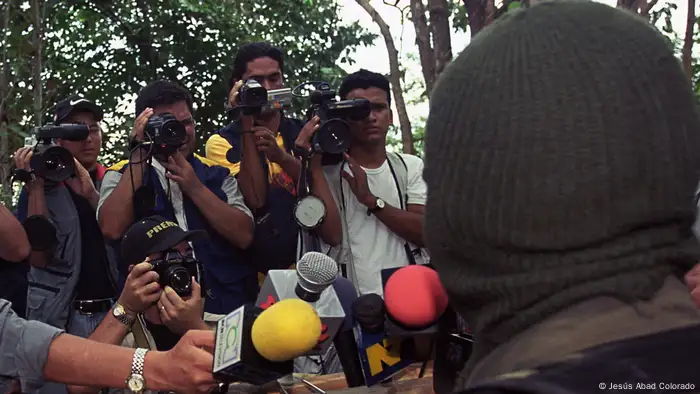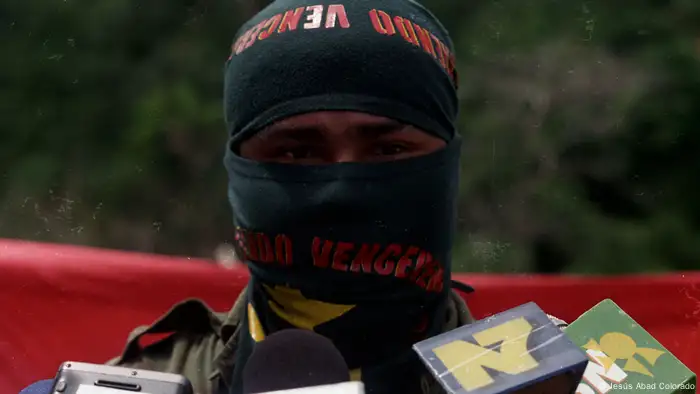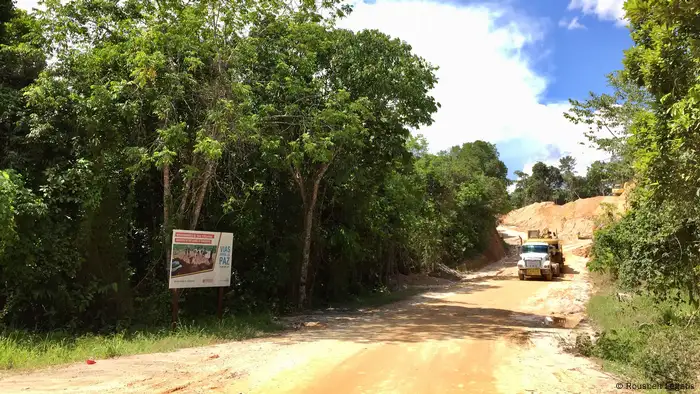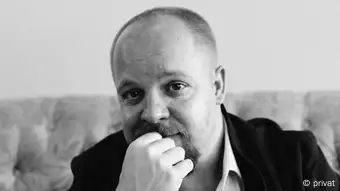interview
How the media can contribute to conflict transformation
Observer, activist, target: the media can play various roles in conflicts. Can they also help to bring peace?
Rousbeh Legatis is a peace and conflict researcher, former UN correspondent and international consultant on the role of journalists as actors in conflict transformation processes. In an interview with #mediadev, he discusses how the media can participate in peacebuilding.
#mediadev: Mr. Legatis, what role does the media play in conflict situations?
Rousbeh Legatis: Neither mere peacemaker nor simple catalyst for conflicts, the media is an indispensable political actor in peacebuilding processes. On the discursive battlefields of already fragmented societies in conflict countries, the media and individual journalists play an important part in constructing conflict realities. They provide a daily stream of information and analysis on current events. Through their work, media professionals not only influence the perceptions of millions of readers, viewers, listeners and internet users, but also determine to a crucial degree whether and to what extent conflict actors recognize the array of constructive options available for resolving their differences.
What information does the local population need most?
In general, people living in conflict zones urgently need key information from reliable sources, enabling them to analyze and assess their own circumstances – and also to demand and legitimize acceptable political action. As an example: On the local level, a conflict situation might escalate to such a degree that it erupts into armed violence or perhaps even takes on dimensions that amount to war. In such circumstances, people living in affected communities will immediately need information about routes out of the combat zone and about water and food supplies. They will want to know where to obtain medical care, what rights they have in relation to state institutions and where armed groups are mobilizing.
At the same time, it is important to emphasize that conflicts never develop in a linear fashion or with a straightforward logic. Instead, the configuration of a conflict and its geographical development are constantly changing. The scope for action that exists within a given conflict widens and narrows, and this dynamic also affects journalists and their work.
In other words, in current civil war situations (such as in Yemen or South Sudan), people need direct humanitarian aid. News coverage of these circumstances is part of constructive conflict reporting. The moment that a peace deal is signed and (as in Colombia) a peace process is initiated, the range of media topics expands. For example, journalists should then begin to track down peace initiatives even in the most remote communities, feature them in their articles and thereby make them visible. Obviously, they should not only highlight the tensions and challenges that emerge in so-called "post-conflict" scenarios by focusing critically on anticipated opportunities for transformation and strategies suggested by those involved, but also report on successes – both large and small and – in the implementation of the peace process. It is important that journalists do not adopt a wholly pessimistic perspective, and thereby ignore smaller initiatives, for example at the local or regional level, that are quite effective in bringing about change in the conflict and its violent forms of expression. Peace education strategies, including successful examples and lessons learned when it comes to walking the walk, are another necessity in covering conflicts.
What challenges does the media face in conflict zones?
From my perspective, there are at least three dimensions to these challenges.
One is the need to develop a self-critical stance. Having worked for years as a journalist and as a researcher studying the media as an actor in conflict transformation, I have often observed a lack of critical reflection among professional journalists on prevailing ideologies – a lack of what in German we call "Ideologiekritik," which I consider to be very important in this context. All of us, including media professionals, are born into and socialized within a specific identity and an associated ideology. If this socialization takes place in the context of an armed conflict, perhaps over several generations, we develop what is called a "conflict identity," which is characterized by ideological struggle, the internalization of destructive means of dealing with ongoing conflicts, and a fervent search for identity. In extreme cases, ostracization, exclusion and killing in the name of this identity can occur.
In conflict transformation processes, it is essential to deconstruct these entrenched and polarized identities – that is to say, to make them more comprehensible and thereby to make it possible to deal with or to transform them. Although they are not the only ones, journalists have an important role to play here: their job is to ask, to question things, to cast doubt by obtaining new information and presenting alternative narratives.
For that reason, it is recommended that journalists – before every interview, before producing any media content of any kind – be aware of and look carefully at the numerous and diverse facets of their own (conflict) identity, which they too invariably bring into the process. We live in multicultural societies with multicultural identities; in conflict societies, these are often heightened to an extreme degree. Anyone whose job it is to ask questions should first examine which facets of their own identity and what ideological socialization steers their questions – and in which direction.
The second specific challenge in these scenarios is that all the actors involved in a conflict pursue strategies to control communication and the flow of information. For that, they use a wide range of methods, from hiring high-paid public relations experts, to launching strategic communication initiatives, to destroying media infrastructure and engaging in psychological or physical violence against key civil society figures and media professionals. These actors include political parties, ministries, church institutions, non-governmental organizations, private companies and the media. There are also actors who employ violence with varying degrees of legitimacy, such as the armed forces, the police, insurgents, paramilitary groups and private security companies. The aim of these actors is, on the one hand, to gain the consent of the population and, on the other, to delegitimize or displace alternative discourses.
The third dimension consists of the editorial and financial structures in which journalists are embedded, including wage disparities, economic dependencies, a lack of resources and pressure from editors-in-chief. What does this mean in practice? Here, we are talking about a lack of training in professional ethics and conflict-sensitivity. In certain political climates, those who engage in critical reporting must expect to face sanctions, threats or even death. Conflict actors may also attack with impunity, without fear that their actions will be promptly investigated – if at all – by the relevant authorities. In addition, lobbyists and representatives of political institutions may attempt to obstruct investigative journalism by cancelling the advertising upon which many media organizations, above all community and local media, depend, or simply by ensuring that critical journalists in leadership positions are replaced. Finally, the work of journalists is also influenced by the preferences, interests, level of awareness and habits of their readers, listeners and viewers.
From a longer-term perspective, how can the media contribute to peace?
It would be naive to think that the media alone can bring about peace. At best, they can contribute a series of actions leading, in the long-term, towards establishing peace-supporting social structures, by defining or reframing conflicts, initiating consensus-building and building trust within and between different communities. In recent decades, a range of peacebuilding-related media initiatives have been developed and implemented worldwide. In some cases, they have been used to rebalance asymmetrical power relations and to oppose or counteract hate speech and the propaganda of violent actors.
There are therefore multiple opportunities for the media to play a constructive role in conflict transformation. Through their work, the media can strengthen dialogue processes by introducing and anchoring important issues in national and local discourses. They can help to break up stereotypes of victims and perpetrators and build up the public’s knowledge about political decisions relating to peace deals and the like, thus making potential transformation processes more participatory. They can raise awareness of the psychosocial effects of conflict. Through their work, they can also support reintegration processes of ex-combatants, including child soldiers, at the community level.
I am simply calling for a critical reflection on the role of journalists in light of the complex systems of relationships that exist, particularly in conflict settings. This approach by no means diminishes the importance of media professionals. On the contrary, it enables a more precise definition of their potential and scope for action in conflict transformation processes. After all, it is a journalist’s job to research, to contextualize, and to select. But in doing so, the journalist is not impartial, but is guided by their own views and attitudes.
What is the task of journalists in conflict situations?
Constructive conflict reporting – in short, reporting that meets quality criteria – reveals more of a conflict’s complexity than it obscures. We live in a politically polarized world, with many fragmented, multicultural, globalized realities, where exploitative neoliberal regimes are emerging and becoming dominant. However, the collectives that live in such societies are affected by these social determinants to varying degrees, intertwined in a complex web of interdependencies and interactions, where the space for self-determined action is changing very rapidly. At the same time, these life realities are intermeshed with complex discursive landscapes, consisting – once again – of a web of dominant and suppressed discourses. Many of these realities remain invisible in the general debates and attitudes found in the media or political life. In order to make vital and valuable contributions to these social discourses (in other words: to contribute to constructive transformation), journalists must be aware of those issues that are generally suppressed or simply not addressed. This awareness is essential if they are to address these issues themselves. The precondition, however, is that editors and reporters are informed about the relevant debates – on post-colonialism (decolonialization), racism and gender, including their main lines of argument and problematic areas. Such a working knowledge is important in enpowering journalists to heighten the visibility of local actors and communities and their views, experiences and decisions in mainstream discourses at the national level.
In terms of the media and journalism, what expectations do you have for peacebuilding decision-makers?
Peacebuilders must understand that journalists and the media are political actors who are not a possible risk factor, but are to be taken seriously and engaged with on an equal footing – and not from a perspective of manipulation or bias, guided by the question: how can we use the media in order to realize specific political projects? Such an attitude would simply reduce the role of the media to that of a PR agency, a position which is not only unacceptable but should be firmly rejected by journalists.
From the start, cooperation with the media must be proactively, and not reactively, built into the design and implementation of peacebuilding interventions, as they are able to identify and make visible the needs and ideas of the local community, as well as the resulting logic of action. They can update a community on events, provide individuals with information and explain the logic of action of a variety of actors, including peacebuilders. Cooperation with the media helps peacebuilders make constructive contributions to conflict transformation processes, build capacity and act as multipliers for these processes. Neither the media nor peacebuilders alone can bring about peace. However, by connecting meaningfully with the other’s work, they can create synergies, helping peace processes maintain momentum and reach all levels of society.
Cooperation with journalists and the media is therefore a key prerequisite for constructive conflict transformation. As intermediary social actors, they are a crucial element in sustainable peacebuilding at the local level.
To what extent can information and communication technology (ICT) and social media be used in peacebuilding?
In theory, ICTs and social media in particular offer the potential to dismantle hierarchies in the access to information and in the processing and dissemination thereof. Through ICTs and social media, anyone – not just journalists – can gather information without recourse to intermediaries and their possibly restrictive influence. In that sense, ICTs open up new pathways and channels for active participation for those who were previously excluded. They can give local stakeholders the opportunity to organize more effectively, to mobilize and to demand more inclusive peacebuilding. In and of themselves, however, they do not prevent exclusion and discrimination. ICTs and social media are situated in tension between disempowerment, marginalization and empowerment. Their use must be continuously assessed – just as the legitimacy of peacebuilding should, as a matter of principle, be continuously built and rebuilt. If this does not occur, there is a danger that power imbalances and marginalization are perpetuated, as the disparity between those who know how to work with ICTs – and thus can use these tools for a self-determined life – and those who do not becomes entrenched.
The starting point for all peacebuilding activities – and for all actors involved – is the local population.
Changing or strengthening their consciousness and their perceptions is an essential element of a constructive conflict transformation. It is important not to be seduced by the hype surrounding new technologies and to remember that social media is a billion-dollar industry. That being said, under certain circumstances, peacebuilding can be enriched – and possibly strengthened – by ICTs.
Interview: Alexander Matschke
DW recommends
WWW links
- Date 25.01.2019
- Author Alexander Matschke
- Feedback: Send us your feedback.
- Print Print this page
- Permalink https://p.dw.com/p/3BxWG
- Date 25.01.2019
- Author Alexander Matschke
- Send us your feedback.
- Print Print this page
- Permalink https://p.dw.com/p/3BxWG




